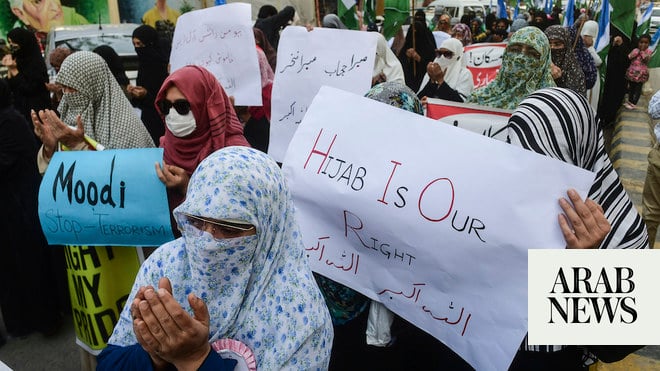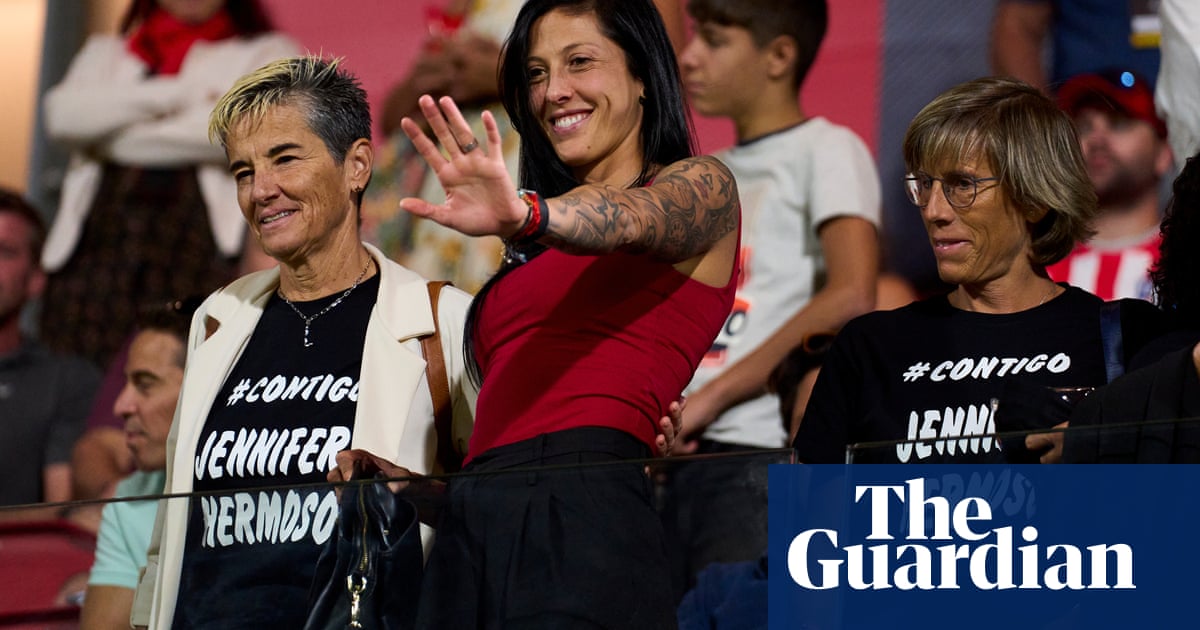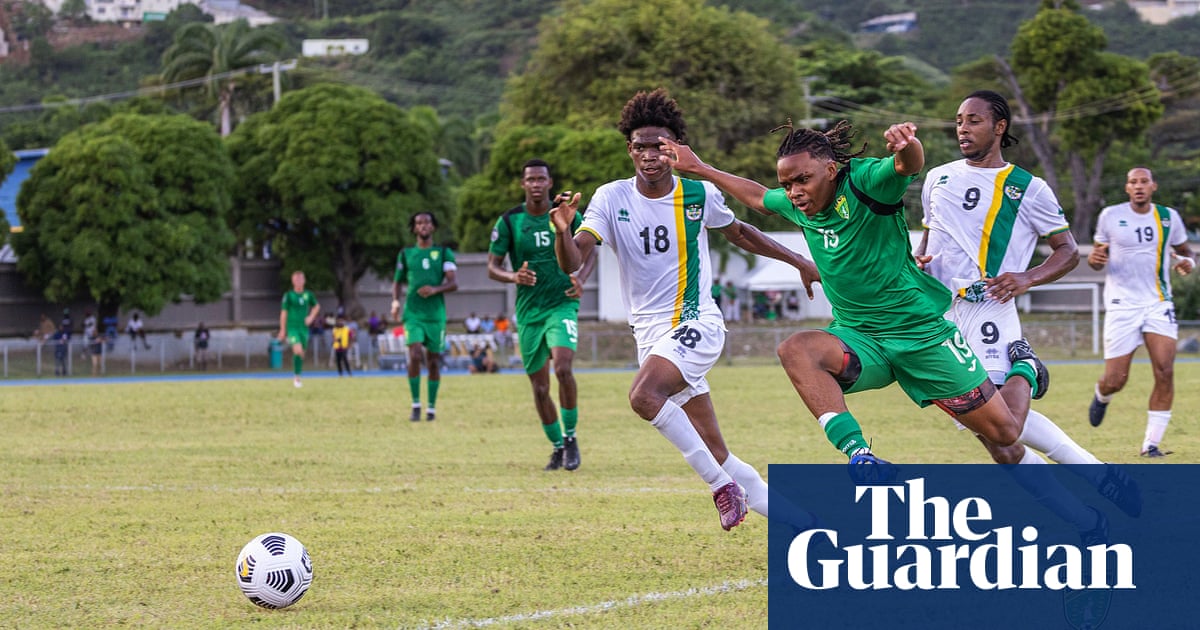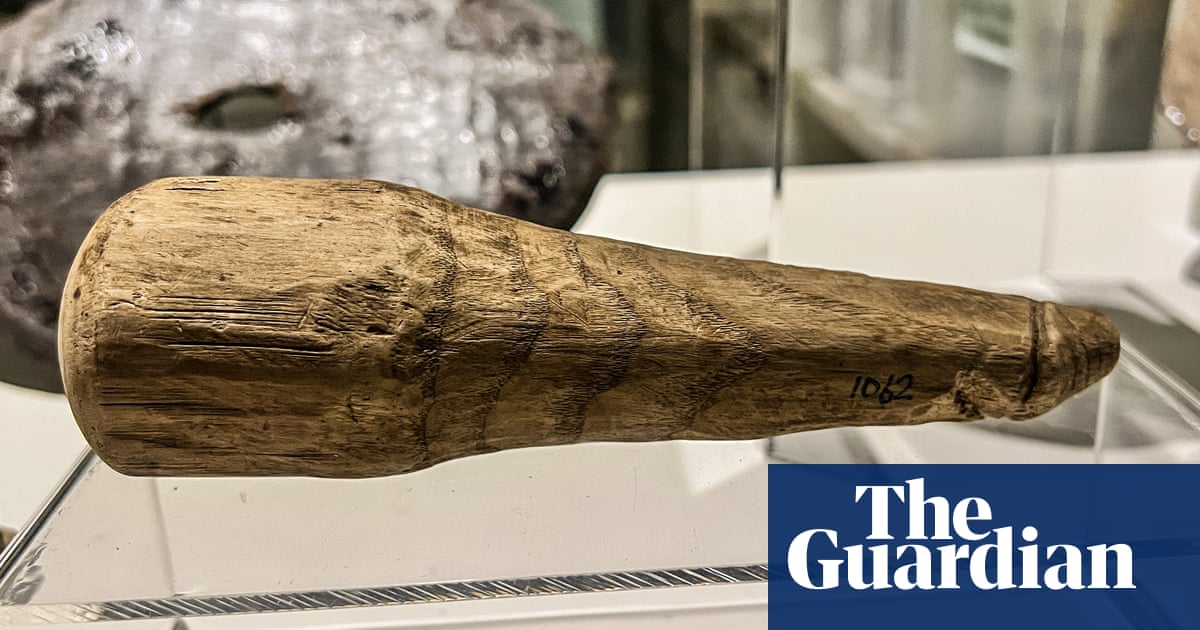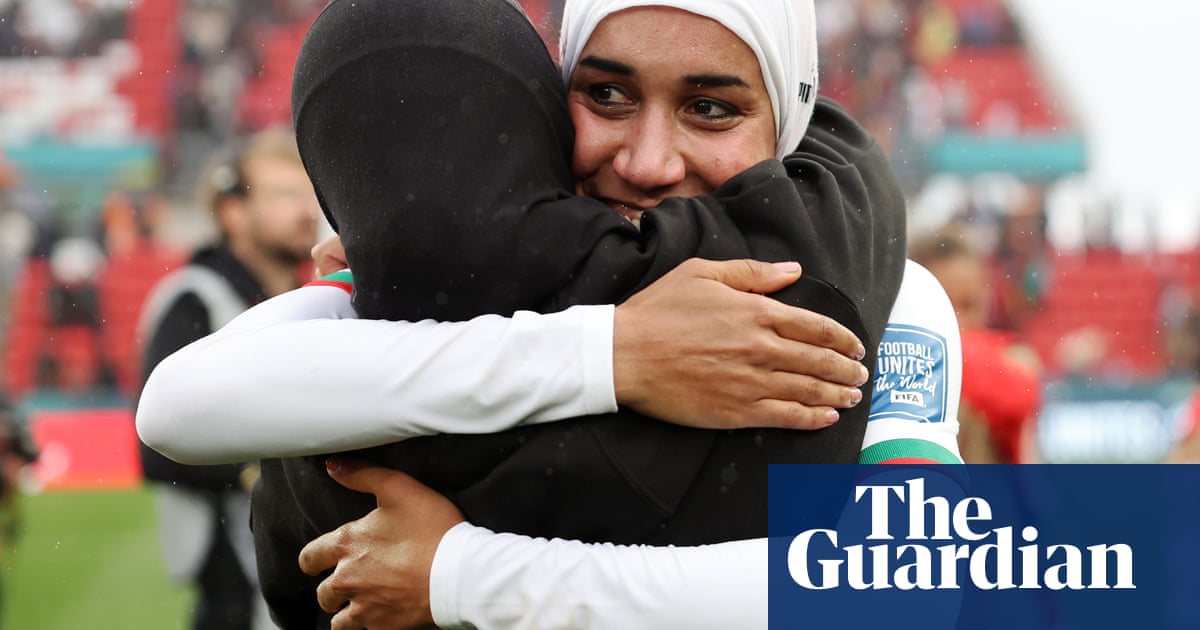
On Sunday the Moroccan player Nouhaila Benzina made history by becoming the first football player to wear a hijab in a World Cup game. Bringing Benzina off the subs bench was more than just an opportunity for the 25-year-old player; it proved that the hijab is no barrier to playing football at the highest level despite having been subject to a ban on health and safety grounds until 2014.
Muslim women and girls who play grassroots football said they hoped Benzina’s appearance would inspire the next generation of hijabi football stars and persuade clubs to explicitly adopt inclusive clothing policies.
“It’s a very proud moment. I knew it was going to happen at one point but I didn’t think it was going to happen so soon – we’re going in the right direction,” said Yasmin Hussain, the head coach of Frenford & MSA, a large grassroots women’s team in east London with strong links to the local Muslim community.
She added that she thinks “it won’t take long at all” before there is an England player wearing a hijab, in part thanks to a drive from the FA to make women’s football more inclusive over the past couple of years, including handing out free sports hijabs and running diversity workshops.
Hussain, 39, estimated about 40% of the players at her club, which includes players who are not Muslim, wear a hijab. She recommends that all players wear sports hijabs for safety reasons.
“It’s brilliant – it’s in one piece, good material, you can sweat in it, it’s proper full coverage, there are loads available,” she said, citing Nike, Adidas and Under Armour as favoured brands.
However, she acknowledged that there can be a “lack of education” in some clubs, which don’t know how to accommodate the needs of Muslim women who want to dress modestly.
This includes looser clothing and long sleeves in addition to hijabs. There are other cultural considerations, she said –for example not being able to play at certain times during Ramadan.
But, overall, she feels that the sport is rapidly becoming more popular and accessible for Muslim women and girls in the UK, unlike in France where the country’s football federation has banned headscarves in official matches.
“If you compare us to France, what people have to go through just to play sports, how blessed we are to be welcomed, the FA is doing so much. It’s just a brilliant time,” she said.
Access to an inclusive club like Frenford & MSA is what got Fatimah-Zahra Sardar, 9, into football. “It was different, because there were more girls playing. I felt more comfortable, because it’s people who are like you,” she said.
She has gone from considering herself not a sporty person to dreaming of playing professionally – and Benzina has only strengthened that aspiration.
“There’s not many footballers who wear hijabs so you feel sometimes there’s not many people representing you. This is the first person in the World Cup and you feel more like you can do that too,” she said, adding that she wants to know where Benzina got her sports hijab from “because mine keeps slipping”.
Her father, Imran Sardar, said he would like to see kits available with a matching hijab, partly because it would delight his Liverpool-mad daughter, but also to further cement their place as mainstream sportswear.
His daughters “have chosen to wear their hijab, but it doesn’t mean it’s still easy for them to go out there if they’re the only person who looks like them”, he said.
Mona Sheikh, 42, plays football at informal sessions run in Dewsbury, West Yorkshire. She said that gaining facilities to play indoors in her local area helped encourage more women to play in their hijabs.
“It was more private so that made me feel more comfortable playing football again,” she said. “We all felt this is a safe space for us to play.”
For the past couple of years, there have also been midnight sessions during Ramadan.
She felt that Benzina’s appearance sends out two messages: “For the British media, it’s really good to educate people – she can wear that and that’s OK; and for the Muslim community and the parents of young girls who think football ‘isn’t a sport for us because look at their kit’.”
Sheikh has been heartened to see how things have changed since she was at school 20-30 years ago.
“It was definitely: ‘You can’t play football.’ Now the young Muslim girls, they all can. The narrative has changed, the new generation don’t have the same barriers, playing football and joining clubs.”
The next step is for more to play at the highest level, she added. “Hopefully, with this new professional footballer with a hijab on, it’ll open doors for young girls to believe they can be a professional footballer and earn money from it.”








